Filter interviews by
Clear (1)
Megha Engineering & Infrastructures Gat Engineer Interview Questions and Answers
Megha Engineering & Infrastructures Gat Engineer Interview Experiences
1 interview found
I applied via campus placement at S R K R Engineering College, Bhimavaram and was interviewed in Nov 2023. There was 1 interview round.
(1 Question)
- Q1. What are the types of clutches?
- Ans.
Types of clutches include friction clutch, electromagnetic clutch, hydraulic clutch, and centrifugal clutch.
Friction clutch: most common type, uses friction to engage and disengage
Electromagnetic clutch: uses electromagnetism to engage and disengage
Hydraulic clutch: uses hydraulic pressure to engage and disengage
Centrifugal clutch: engages at a certain RPM
Top trending discussions






Interview questions from similar companies

Graduate Engineer Trainee (Get) Interview Questions & Answers
Worleyposted on 5 Dec 2024
I applied via campus placement at BRACT's Vishwakarma Institute of Information Technology, Pune and was interviewed in Nov 2024. There were 3 interview rounds.
Basic Aptitude Questions Reasoning & Verbal Ability
How is culture at IT Industries
(12 Questions)
- Q1. What are the tensile forces acts on material
- Ans.
Tensile forces are forces that stretch or pull materials apart.
Tensile forces act in the opposite direction of compressive forces
Examples of tensile forces include stretching a rubber band or pulling on a rope
Tensile strength is a measure of a material's ability to withstand tensile forces
- Q2. Write all formulas you know of Fluid Mechanics
- Ans.
Formulas in Fluid Mechanics
Bernoulli's equation: P + 0.5ρv^2 + ρgh = constant
Continuity equation: A1v1 = A2v2
Navier-Stokes equation: ρ(∂v/∂t + v∇v) = -∇P + μ∇^2v + ρg
Ideal gas law: PV = nRT
Poiseuille's Law: Q = πr^4(ΔP)/(8ηL)
- Q3. Laws of thermodynamics
- Ans.
The fundamental laws of thermodynamics govern the behavior of energy in systems.
First Law of Thermodynamics: Energy cannot be created or destroyed, only transferred or converted.
Second Law of Thermodynamics: The entropy of an isolated system will always increase over time.
Third Law of Thermodynamics: As temperature approaches absolute zero, the entropy of a system approaches a minimum value.
Examples: A car engine conve...
- Q4. What is Fouriers Law write its equation
- Ans.
Fourier's Law describes the flow of heat through a material.
Fourier's Law states that the rate of heat transfer through a material is directly proportional to the negative gradient of temperature and the area perpendicular to the direction of heat flow.
The equation for Fourier's Law is q = -k * A * (dT/dx), where q is the heat transfer rate, k is the thermal conductivity of the material, A is the cross-sectional area, ...
- Q5. Explain Iron Carbon phase diagram
- Ans.
The Iron-Carbon phase diagram illustrates the phases and microstructures of iron-carbon alloys as a function of temperature and composition.
Shows the phases of iron and carbon at different temperatures and compositions
Includes regions for austenite, ferrite, cementite, and pearlite
Critical points such as eutectic point and eutectoid point are marked
Used to predict the microstructure of steel based on composition and he
- Q6. Stress Strain Curve Explain
- Ans.
The stress-strain curve shows the relationship between stress (force applied) and strain (resulting deformation) in a material.
The curve typically consists of three main regions: elastic deformation, plastic deformation, and fracture.
In the elastic region, the material deforms elastically and returns to its original shape when the stress is removed.
The plastic region is where permanent deformation occurs, but the mater...
- Q7. Calculate SFD & BMD
- Ans.
SFD and BMD are calculated using equations of equilibrium and relationships between load, shear force, and bending moment.
Calculate reactions at supports using equations of equilibrium
Determine the shear force at different points along the beam by considering the applied loads and reactions
Calculate the bending moment at different points by integrating the shear force diagram
Plot the SFD and BMD based on the calculated...
- Q8. How to Calculate velocity of fluid flowing through pipe
- Ans.
Velocity of fluid flowing through a pipe can be calculated using the formula Q = A * V, where Q is the flow rate, A is the cross-sectional area of the pipe, and V is the velocity of the fluid.
Calculate the cross-sectional area of the pipe using the formula A = π * r^2, where r is the radius of the pipe.
Determine the flow rate (Q) of the fluid, which is typically measured in cubic meters per second (m^3/s) or liters per...
- Q9. What is Difference between entropy and enthalpy
- Ans.
Entropy is a measure of disorder or randomness in a system, while enthalpy is a measure of the heat energy in a system.
Entropy is a thermodynamic property that measures the amount of energy in a system that is not available to do work.
Enthalpy is a thermodynamic property that measures the total heat content of a system.
Entropy increases in irreversible processes, while enthalpy remains constant.
Entropy is denoted by S,...
- Q10. Draw Refrigeration Cycle Graph
- Ans.
The Refrigeration Cycle graph shows the process of cooling a space by transferring heat from inside to outside.
The cycle starts with the refrigerant entering the compressor as a low-pressure gas.
The refrigerant is compressed, raising its temperature and pressure, before entering the condenser where it releases heat to the surroundings.
After losing heat, the refrigerant becomes a high-pressure liquid and flows into the ...
- Q11. Draw vapour absorption cycle graph
- Ans.
The vapor absorption cycle graph shows the relationship between pressure, temperature, and enthalpy during the process.
The graph typically shows pressure on the y-axis and temperature on the x-axis.
It includes lines representing the various stages of the cycle such as evaporation, absorption, and desorption.
The enthalpy values at different points in the cycle can also be plotted on the graph.
Example: The graph will sho...
- Q12. Draw Rankine otto & diesel cycle graph
- Ans.
The Rankine, Otto, and Diesel cycle graphs are commonly used in thermodynamics to analyze different types of heat engines.
The Rankine cycle is used in steam power plants and consists of four processes: heat addition, isentropic expansion, heat rejection, and isentropic compression.
The Otto cycle is used in spark-ignition engines and consists of four processes: isentropic compression, constant volume heat addition, isen...
Interview Preparation Tips
- Strength of materials
- Thermodynamics
- Heat Transfer
- Fluid Mechanics
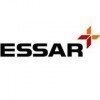
Graduate Engineer Trainee (Get) Interview Questions & Answers
Essar Groupposted on 8 Aug 2024
I applied via campus placement at National Institute of Technology (NIT), Kurukshetra and was interviewed in Jul 2024. There were 2 interview rounds.
(10 Questions)
- Q1. Tell me about youself?
- Ans.
I am a recent graduate with a degree in engineering, eager to learn and grow in a professional setting.
Completed Bachelor's degree in Mechanical Engineering
Interned at XYZ Company, where I gained experience in project management
Proficient in CAD software such as SolidWorks
Strong problem-solving and analytical skills
Excellent communication and teamwork abilities
- Q2. What are your projects ?
- Ans.
I have worked on projects related to renewable energy systems and sustainable building design.
Designed and implemented a solar panel system for a residential building
Conducted energy audits to optimize energy efficiency in buildings
Researched and proposed sustainable materials for construction projects
- Q3. What you did in internship?
- Ans.
I worked on designing and implementing a new software system for tracking inventory and managing orders.
Developed a user-friendly interface for inputting and accessing data
Integrated barcode scanning technology for efficient inventory management
Collaborated with team members to troubleshoot and improve system functionality
- Q4. What are your favourite subjects ?
- Ans.
My favorite subjects are Mathematics, Physics, and Computer Science.
Mathematics - I enjoy solving complex problems and equations.
Physics - I am fascinated by the laws of nature and how things work in the universe.
Computer Science - I love coding and developing new software applications.
- Q5. What is 2nd law of thermodynamics?
- Ans.
The 2nd law of thermodynamics states that the total entropy of an isolated system can never decrease over time.
Entropy of a system tends to increase over time
Heat energy naturally flows from hot to cold objects
Efficiency of energy conversion processes is limited by the 2nd law
- Q6. What are the kelvin plank and claussis statement?
- Ans.
Kelvin-Planck and Clausius statements are two fundamental principles of thermodynamics.
Kelvin-Planck statement: It is impossible to construct a device that operates in a cycle and produces no effect other than the extraction of heat from a single reservoir and the performance of an equivalent amount of work.
Clausius statement: It is impossible to construct a device that operates in a cycle and produces no effect other ...
- Q7. What is difference between 4 stroke and 2 stroke engines?
- Ans.
4 stroke engines have separate intake, compression, power, and exhaust strokes, while 2 stroke engines combine intake and compression in one stroke and power and exhaust in another.
4 stroke engines have separate intake, compression, power, and exhaust strokes
2 stroke engines combine intake and compression in one stroke and power and exhaust in another
4 stroke engines are more fuel efficient and produce less pollution
2 ...
- Q8. What if we put diesel in SI engine and petrol in CI engine?
- Ans.
Putting diesel in SI engine and petrol in CI engine would lead to inefficient combustion and potential damage to the engines.
Diesel is designed to be used in compression ignition (CI) engines, which rely on high compression ratios to ignite the fuel. Using diesel in a spark ignition (SI) engine would result in incomplete combustion and poor performance.
Petrol is designed for use in spark ignition (SI) engines, which re...
- Q9. Differentiate b/w CI and SI engine?
- Ans.
CI engines use compression ignition while SI engines use spark ignition.
CI engines compress air to high pressures, causing the fuel to ignite spontaneously
SI engines use spark plugs to ignite the fuel-air mixture
CI engines are more fuel efficient but produce more emissions
Examples of CI engines include diesel engines, while SI engines include gasoline engines
- Q10. What is your final year project ? Asked in deep
(3 Questions)
- Q1. What do yo know about company??
- Ans.
Company is a leading engineering firm specializing in renewable energy solutions.
Company was founded in 2005 and has since grown to become a key player in the renewable energy sector.
They offer a wide range of services including solar panel installation, wind turbine maintenance, and energy efficiency consulting.
Company has completed projects in multiple countries, showcasing their global reach and expertise.
They prior...
- Q2. What is your strength and weakness ?
- Ans.
Strength: Strong problem-solving skills. Weakness: Difficulty delegating tasks.
Strength: Able to analyze complex problems and come up with effective solutions.
Weakness: Struggle to trust others to complete tasks to my standards.
Strength: Excellent attention to detail.
Weakness: Sometimes too focused on perfection, leading to delays in project completion.
Strength: Strong communication skills, able to effectively convey i...
- Q3. Are you happy to relocate?
- Ans.
Yes, I am happy to relocate for the right opportunity.
I am open to relocating for career growth and new experiences.
I have relocated in the past for internships and projects.
I understand the importance of being flexible and adaptable in the engineering field.
Interview Preparation Tips
- Thermodynamics
- IC Engines
- Strength of material
- Material Science
- Heat Exchangers
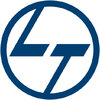
Graduate Engineer Interview Questions & Answers
Larsen & Toubro Limitedposted on 10 Nov 2024
I applied via Campus Placement and was interviewed in Oct 2024. There were 2 interview rounds.
Logical , verbal, numerical some tchnical questions
(2 Questions)
- Q1. Why do you want to join l&T?
- Q2. What are your strength and weakness?
Interview Preparation Tips
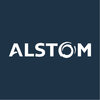
Graduate Engineer Trainee (Get) Interview Questions & Answers
Alstom Transportationposted on 20 Aug 2024
I applied via Campus Placement and was interviewed in Jul 2024. There were 4 interview rounds.
All aptitude, verbal questions
Current affair topics
(2 Questions)
- Q1. Projects based question
- Q2. Favourite subject related questions..decent knowledge on one's core is enough
(2 Questions)
- Q1. Achievements and regrets
- Q2. Family and educational background
Interview Preparation Tips

Graduate Engineer Trainee (Get) Interview Questions & Answers
Tata Technologiesposted on 10 Jun 2024
(2 Questions)
- Q1. Various designs considerations
- Ans.
Design considerations play a crucial role in the success of a project or product.
Consider user experience and usability
Think about scalability and flexibility
Ensure security and privacy measures are in place
Take into account cost and resource constraints
- Q2. Type of defects in plastic
- Ans.
Common defects in plastic include bubbles, warping, sink marks, and flash.
Bubbles: trapped air pockets in the plastic
Warping: deformation of the plastic due to uneven cooling
Sink marks: depressions on the surface caused by uneven cooling or thick sections
Flash: excess material around the edges of the mold
Cad test (surfacing and part modelling)
Interview Preparation Tips

Graduate Engineer Trainee (Get) Interview Questions & Answers
Saint-Gobainposted on 27 Aug 2024
Technical Aptitude on java , .net , and sql
Generative Al . time was 8 minutes and 2 minutes for thinking
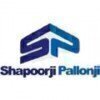
Graduate Engineer Interview Questions & Answers
Shapoorji Pallonji Groupposted on 23 Aug 2024
I applied via Campus Placement and was interviewed in Feb 2024. There were 3 interview rounds.
Basic aptitude test (online)
Basic topics, we have to talk for 5min.
(3 Questions)
- Q1. Resume based questions
- Q2. Relocation all over india
- Q3. Questions on favourite subject
Interview Preparation Tips
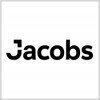
Graduate Engineer Trainee (Get) Interview Questions & Answers
Jacobs Engineering Groupposted on 28 Jun 2022
I applied via Naukri.com and was interviewed in Dec 2021. There were 2 interview rounds.
The test was based on aptitude section and core section(mine was chemical).
(2 Questions)
- Q1. Heat transfer phenomenon
- Ans.
Heat transfer is the movement of thermal energy from one object to another due to a temperature difference.
Heat can be transferred through conduction, convection, and radiation.
Conduction is the transfer of heat through a material without any movement of the material itself.
Convection is the transfer of heat through the movement of fluids.
Radiation is the transfer of heat through electromagnetic waves.
Examples of heat ...
- Q2. Fluid mechanics related formula and details
Interview Preparation Tips

30 minutes, Aptitude and Technical
(3 Questions)
- Q1. Where do you see yourself in 5 years?
- Q2. What are your strengths and weaknesses?
- Q3. Tell me about yourself.
Interview Preparation Tips
Megha Engineering & Infrastructures Interview FAQs
Recently Viewed
Tell us how to improve this page.
Megha Engineering & Infrastructures Interviews By Designations
- Megha Engineering & Infrastructures Senior Engineer Interview Questions
- Megha Engineering & Infrastructures Civil Site Engineer Interview Questions
- Megha Engineering & Infrastructures Civil Engineer Interview Questions
- Megha Engineering & Infrastructures QA QC Engineer Interview Questions
- Megha Engineering & Infrastructures Store Executive Interview Questions
- Megha Engineering & Infrastructures Graduate Engineer Trainee (Get) Interview Questions
- Megha Engineering & Infrastructures Senior Civil Engineer Interview Questions
- Megha Engineering & Infrastructures Engineer Interview Questions
- Show more
Interview Questions for Popular Designations
- Graduate Engineer Trainee (Get) Interview Questions
- Graduate Engineer Interview Questions
- Game Tester Interview Questions
- Game Developer Interview Questions
- Production Graduate Engineer Trainee Interview Questions
- Software Engineer Interview Questions
- GIS Engineer Interview Questions
- Senior Software Engineer Interview Questions
- Show more
Megha Engineering & Infrastructures Gat Engineer Interview Process
based on 1 interview
Interview experience
Interview Questions from Similar Companies
Fast track your campus placements
|
Engineer
898
salaries
| ₹2.2 L/yr - ₹7 L/yr |
|
Senior Engineer
848
salaries
| ₹3.2 L/yr - ₹12 L/yr |
|
Associate Manager
499
salaries
| ₹4.8 L/yr - ₹15.8 L/yr |
|
Mechanical Engineer
411
salaries
| ₹2 L/yr - ₹9 L/yr |
|
Civil Engineer
345
salaries
| ₹2.2 L/yr - ₹7.5 L/yr |

Larsen & Toubro Limited

Tata Projects
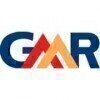
GMR Group

Hindustan Construction Company
- Home >
- Interviews >
- Megha Engineering & Infrastructures Interview Questions >
- Megha Engineering & Infrastructures Gat Engineer Interview Questions












